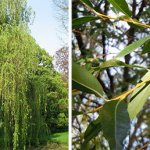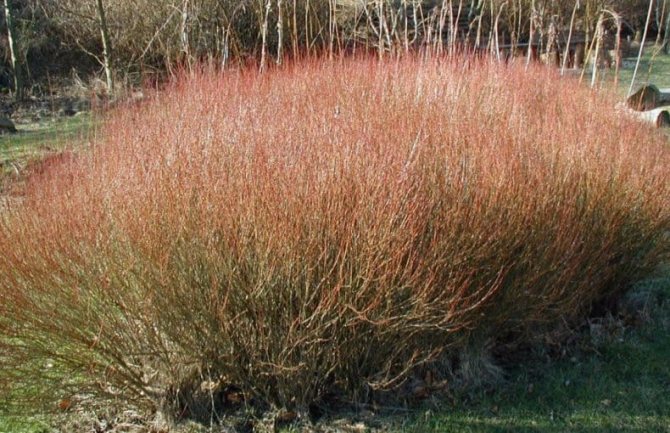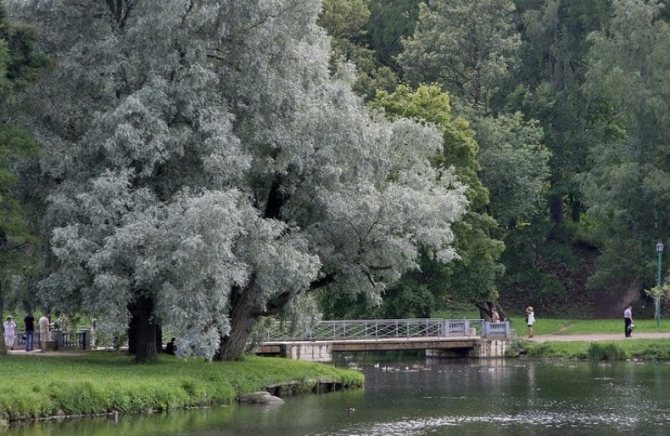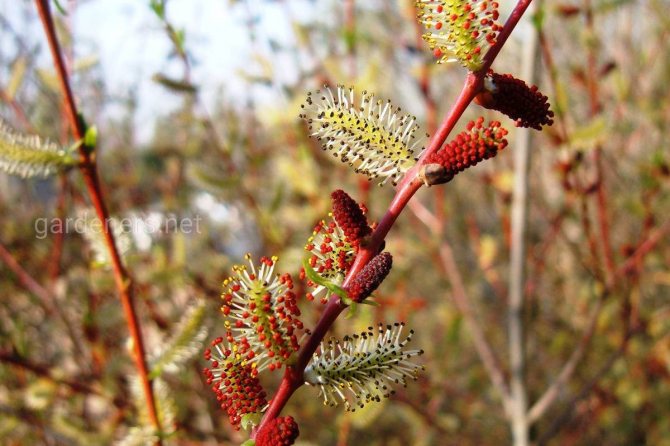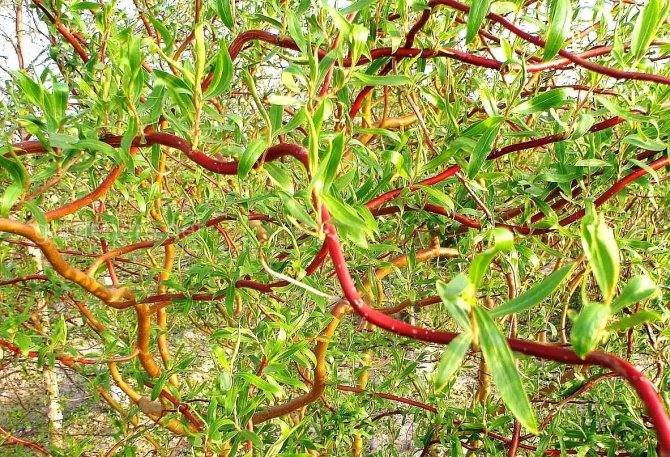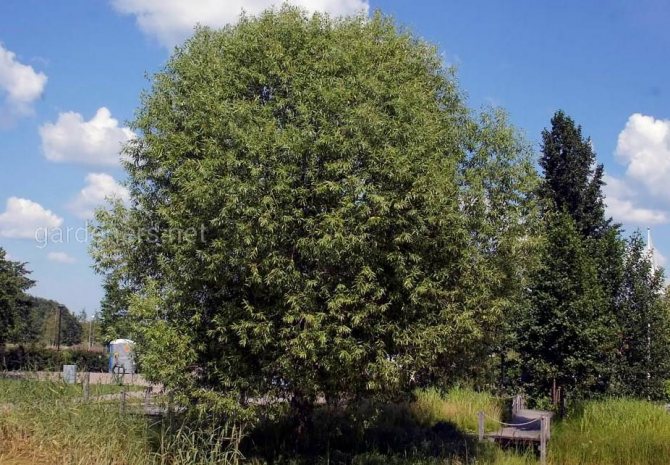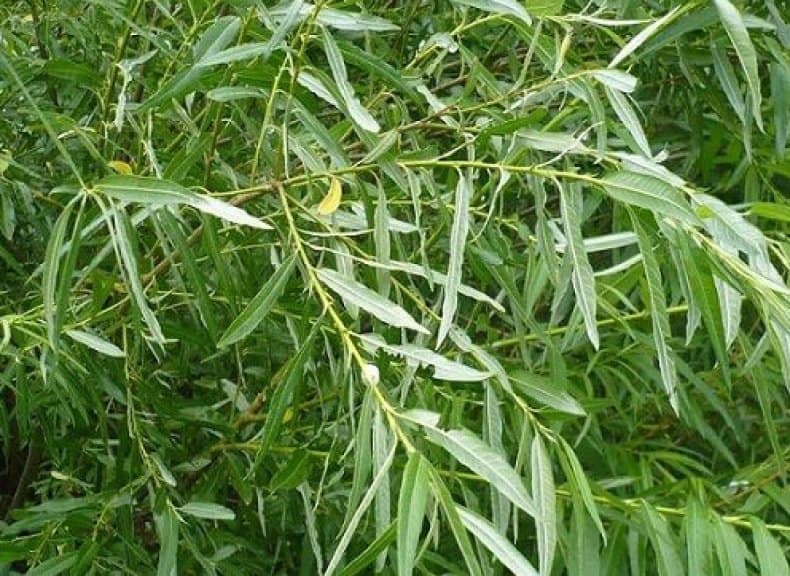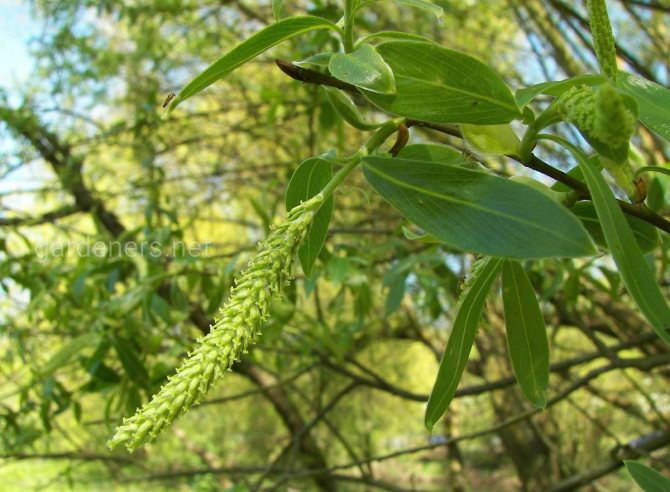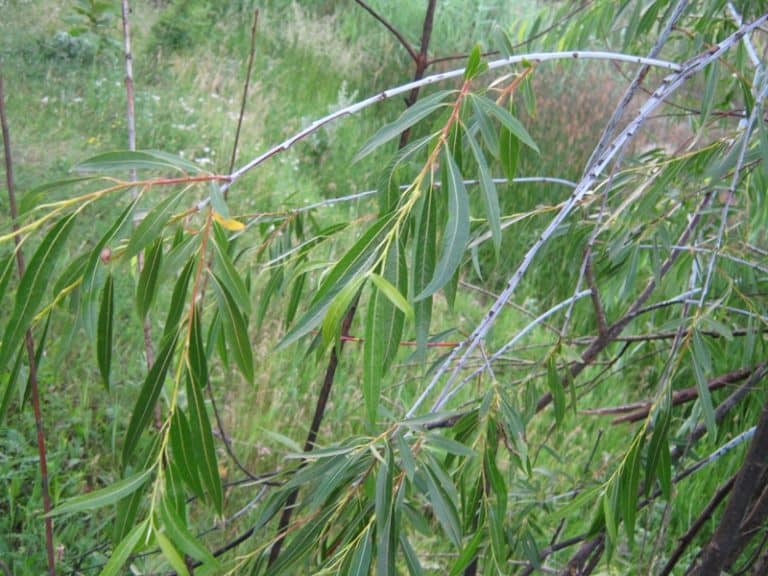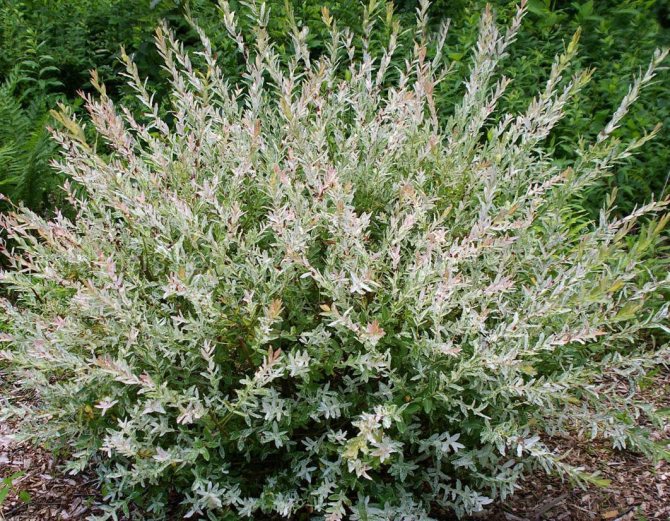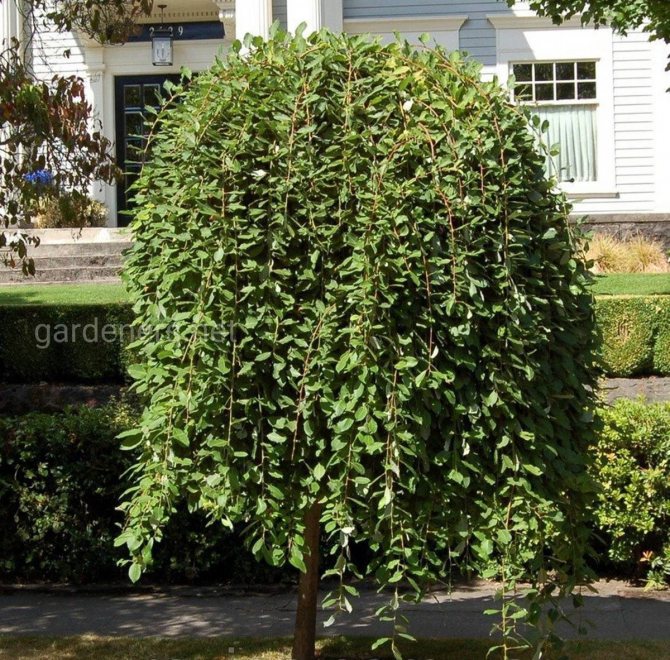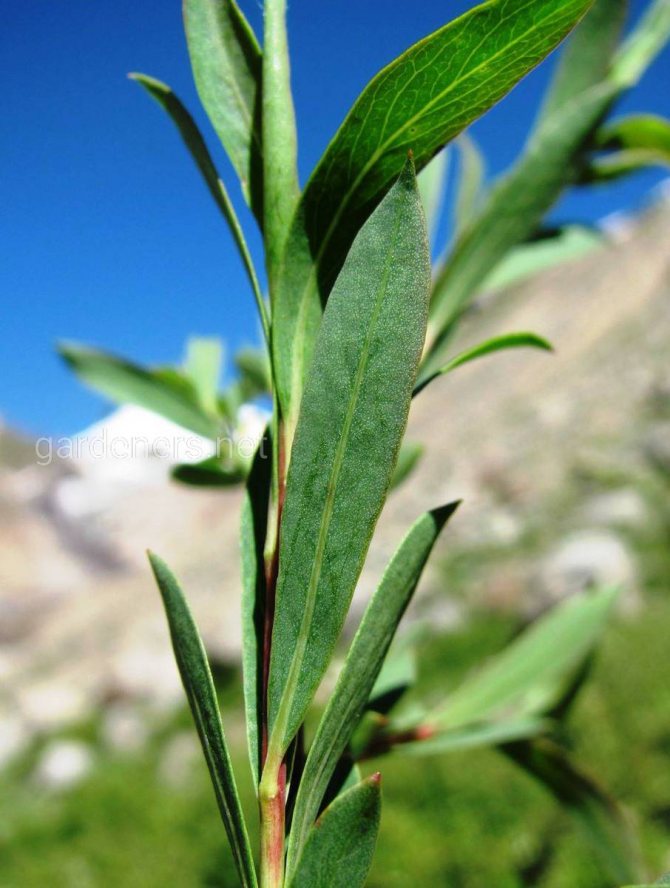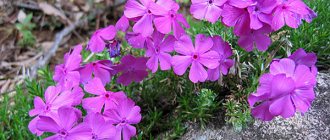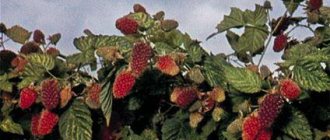A wonderful tree widespread in our country is willow. She is unusually pretty: a powerful trunk, thin hanging branches, graceful elongated leaves of various shades of green, flowers in the form of fluffy earrings. Perhaps every inhabitant of the northern hemisphere is familiar with willow, and many grow it in their garden plots.
The people call willow willow, willow, willow, vine, willow, willow, shelyuga, and the names differ depending on the area.
The tree has long served as an inspiration for poets, writers and artists. A. Fet, S. Yesenin, A. Akhmatova, F. Tyutchev and many other poets dedicated their lines to him, and G. Kh. Andersen wrote a fairy tale called “Under the Willow”. The most famous painting, which depicts this plant, is "Weeping Willow" by C. Monet, however, the tree can be seen in many landscapes.
Willow is also known in many religions. In Christianity, willow replaces palm branches on Palm Sunday. In Judaism, the tree plays the role of one of the symbols of the Sukkot holiday. According to Chinese mythology, a pitcher with a willow branch that expels demons is held in her hands by the merciful goddess Guanyin. Willow trees are also often mentioned in folklore. A Japanese legend has it that a ghost lodges where the willow grows, and the British consider the willow to be an ominous plant that haunts travelers.
The unusual tree is famous not only for mystical, but also for quite down-to-earth, practical properties. Willow is widely used in medicine, industry and manufacturing, agriculture.
- Medicine. Willow leaves and bark have been used to treat fever since ancient Egypt and Greece, and the Native Americans used rakita tea as a pain reliever. Later, scientists discovered a number of useful substances in different parts of the plant: tannin, salidroside, salicin, flavonoids. And the well-known salicylic acid, from which aspirin was later made, was first discovered in willow.
- Production. Since ancient times, thin flexible branches have been used by the inhabitants of the northern hemisphere for weaving furniture, fish traps, fences and fences. Vine weaving has survived to this day. Now baskets, chairs, caskets, cradles are most often made from willow rods. Wicker items are extraordinarily beautiful and fit perfectly into many interior styles. Willow wood is also suitable for the production of paper, rope and even fabric, and the sustainable fashion of recent years has revived interest in natural willow products.
- Agriculture and the environment. The weeping tree is also widely used in agriculture. Firstly, willow is an excellent honey plant, especially valuable for its early flowering. Secondly, the branches and leaves are good for livestock feed. Broom is often planted along sloping banks or ravine slopes. Thanks to its long, twisting roots, the plant does an excellent job with erosion. The vitality and durability of the tree sometimes even becomes an environmental problem, for example, in Australia, willow was widely used to strengthen the banks, planting huge areas with it. The willow has taken root well and has supplanted many local plants. In addition, the tree is used for wastewater treatment, the formation of protective forest belts, and drainage of swampy areas.
- Gardening and landscaping.Willow, and especially some of its varieties and species, is an excellent decorative culture that can decorate any site. In addition, the tree is unusually unpretentious and grows quickly. Many eminent designers include willow in their compositions, creating romantic gardens.
Botanists classify the genus willow (lat. Salix) to the willow family (lat. Saliceae). The genus includes woody plants and shrubs that can be deciduous or, much less commonly, evergreen. Willow species are very different: some of them are large trees with a powerful trunk, reaching 40 meters in height, others are dwarf creeping shrubs. The appearance is due to the growing area. Tall species are found in the temperate and subtropical zone of Europe, Asia and America, and dwarf willows grow mainly in the north.
Most often, the willow has a large weeping crown, consisting of a large number of elongated branched stems covered with bark of various shades: from light green to dark purple. The bark of young shoots and trunk is usually smooth, begins to crack with age. Leaves, with rare exceptions, are arranged spirally and sit on a short petiole with two stipules. Their shape is very diverse: most often there are species with linear and narrow-lanceolate leaves, a little less often - with elliptical and even rounded. The edge of the leaf blade is usually decorated with small or large denticles, although there are species with smooth edges.
Willow is a dioecious plant with small male and female flowers, collected in dense inflorescences-earrings. Some willows bloom in early spring, before the leaves appear, others a little later, in May-June. After flowering, the fruit ripens in the form of a box with a large number of small seeds with a dense white tuft. Seeds are carried by the wind over long distances and, once in water or silt, retain their germination for a long time.
Willow brittle, description of the species
The plant in question has a very dense and lush green crown, which in natural conditions quite often acquires a gorgeous tent-like appearance. Only very old brittle willows look somewhat disheveled. They live up to 50 years (according to some sources up to 80), growing during this time by 20 meters in height and 15 in diameter. The bark of these willows is all cracked, its color is gray-brown. Sometimes you can see how brittle willow grows in three or more trunks at once, coming out of almost one point. The photo captured one such phenomenon.
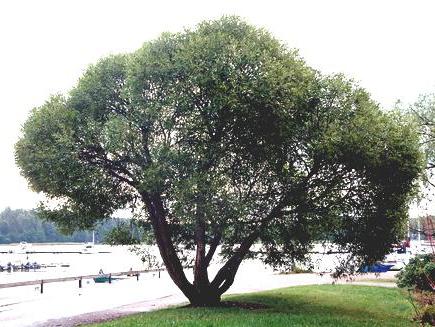
The branches of the brittle willow are not weeping, but straight, only slightly drooping, smooth, without outgrowths and pubescence. Their color can be light brown with yellow or olive. Leaves are oblong, narrow, pointed at the ends, up to 10 cm in length and up to 2 in width. They are smooth, dense to the touch, only the young leaves are slightly more delicate and slightly sticky. Their color remains green even with the onset of autumn. Yellowing during the period of leaf fall is observed only partially. The brittle willow blooms in April, less often in May. It throws out flowers-earrings almost simultaneously with the foliage. The color of the earrings is greenish with yellow due to the numerous stamens. There is little charm in them, but they are very popular with bees.
Ornamental species, hybrids and varieties of willow
In total, there are at least 550 species of various willows in the genus. This diversity is the result of natural mutations and human activities. For a long time studying the plant, many hybrids have been bred. Even botanists often find it difficult to classify a particular species, and what can we say about simple amateur gardeners.
And yet, there are several, the most common species, suitable for landscaping parks, squares and personal plots.
White or silvery willow (lat. Salix alba) is a large (up to 30 m in height) tree with thick cracking bark and a spreading openwork crown. The plant is widespread in Russia and the former Soviet republics, as well as in Western Europe, China and Asia Minor.It is found mainly along the banks of rivers and other bodies of water and often occupies vast areas. It is very unpretentious and grows quickly in favorable conditions; in the northern regions, young shoots can freeze a little. It is durable (some specimens reach 100 years or more), tolerates well both lack and excess of moisture, undemanding to the soil. Excellent for landscaping large, including urban, areas, can be used to obtain vines.
Distinctive features of the species - thin hanging branches, painted in silver-gray, with age, the shade of the shoots changes to brown. Bright green smooth leaves have a lanceolate shape and a finely serrated edge, the reverse side of the leaf is silvery, slightly pubescent. Round inflorescences-earrings develop in spring, simultaneously with the leaves.
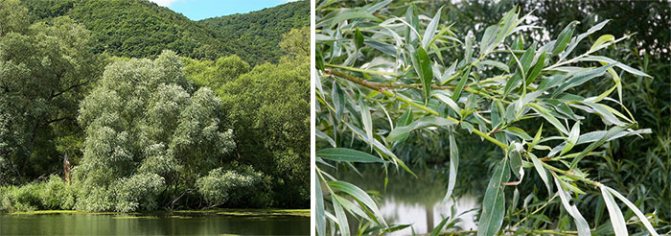

I. white
The widespread use of culture has led to the emergence of various forms, varieties and varieties.
Some varieties:
- Yellow (var. Vitellina) - large rounded crown and golden yellow or reddish shoots.
- Shiny (var. Sericea) is a medium-sized tree with graceful, emerald-gray foliage.
- Gray (var. Caerulea) - branches directed upwards at a slight angle, bluish-gray leaves.
Forms:
- Silvery (f. Argentea) - young leaves have a beautiful, silvery-gray shade on both sides, later the front side of the leaf becomes rich green, the back remains gray.
- Yellow weeping (f. Vitellina pendula) - very thin and long shoots that fall to the ground.
- Oval (f. Ovalis) - leaves of an unusual elliptical shape.
Among the large number of varieties of white willow, the following can be distinguished:
- Golden Ness is a Royal Horticultural Society award-winning cultivar. The plant is especially attractive in winter, when graceful golden-yellow branches are exposed.
- "Tristis" (Tristis) - a fast-growing willow of a classic appearance: narrow silvery-green leaves on thin drooping branches. Differs in high frost resistance and is recommended for areas with cold winters.
- "Yelverton" (Yelverton) - a short tree or shrub with bright red-orange shoots.
- "Aurea" (Aurea) - a large plant with unusual, yellow-green leaves.
- "Hutchinson's Yellow" (Yellow Hutchinson) - shrub, reaching 5 m in height, decorated with graceful shoots of a reddish-yellow shade.
- "Britzensis" (Britzen) - shoots of a red-brown shade.
- "Chermesina Cardinalis" (Chermesina cardinalis) is a very showy variety with scarlet branches.
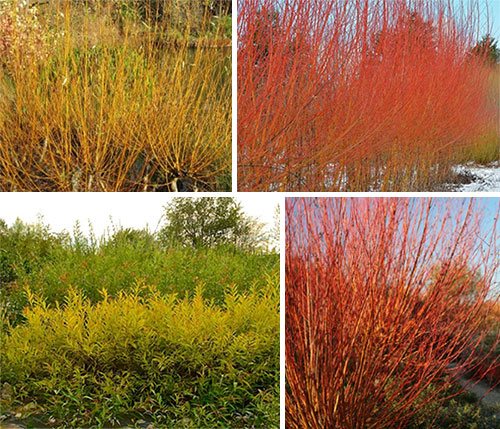

I. "Golden Ness", I. "Yelverton", I. "Aurea", I. "Chermesina Cardinalis"
The Babylonian willow or weeping willow (Latin Salix babylonica) is a tree characterized by brittle yellowish-green hanging branches. Distributed in the subtropical zone - Central Asia, the Black Sea coast of the Caucasus, the southern coast of Crimea. Contrary to the name, the birthplace of culture is China, from where it was transported to other regions. It reaches a height of 12 m, the diameter of the crown is about 6 m. In addition to long stems that reach the surface of the earth, it stands out for its beautiful glossy, bright green above and silvery below, leaves. It is very decorative, as it has a short leafless period: the leaves fall off only in January, and at the end of February they grow back. Babylonian willow is especially good in early spring when covered with fresh young greenery.
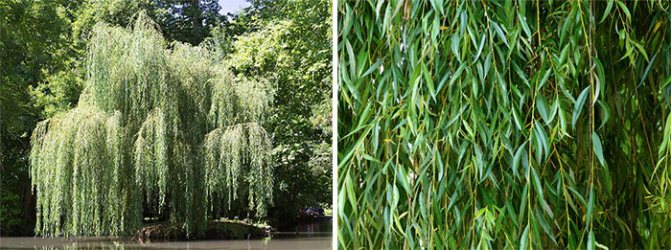

I. Babylonian
Unfortunately, the species is not hardy and cannot grow in regions with cold winters. Otherwise, the culture has no special preferences: it does not require special soils and easily tolerates short periods of drought.
Of the varieties, one is widely known:
- Peking (var. Pekinensis) - distributed mainly in China, Korea and Eastern Siberia. Also known as the Matsuda willow (Latin Salix matsudana).
How much more varieties of weeping willow:
- "Tortuosa" (Tortuosa) - a plant interestingly strongly curved, as if twisted, branches of a brown-green hue and bright fresh foliage.
- "Crispa" (Crispa) - this variety does not have twisted shoots, but leaves that form intricate curls on the branches.
- "Tortuosa Aurea" (Tortuosa Aurea) - twisted red-orange stems.


I. "Tortuosa", I. "Crispa", I. "Tortuosa Aurea"
Purple willow (lat.Salix purpurea) is a plant, the popular name of which is yellow gooseberry.This species is found throughout the temperate zone of the northern hemisphere. It is a medium-high (average 3 m, maximum size - 5 m) deciduous shrub with dense purple or yellowish shoots directed upwards. Elongated, bright green on top and silvery green on the back, the leaves are arranged in pairs, and not alternately, like in other species. Inflorescences that appear in early spring are colored purple, hence the name of the taxon. Purple willow is often used for vine weaving, in ornamental gardening - as a hedge.
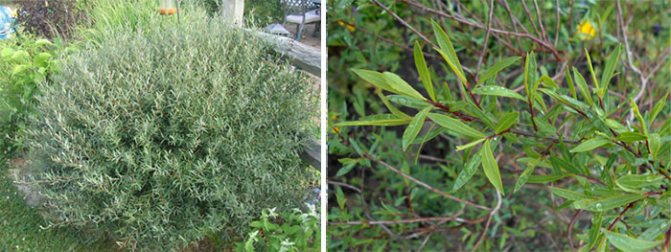

I. purple
The most famous forms:
- Graceful f. Gracilis is a fast-growing shrub with elongated gray leaves.
- Hanging (f. Pendula) - a shrub with a wide crown formed by thin hanging shoots of purple color.
- Dwarf (f. Nana) - is compact in size and neat spherical crown.
Among the varieties, the following can be distinguished:
- "Norbury" (Norbury) - graceful undersized variety.
- "Goldstones" (Golden stones) - shoots of a beautiful golden hue.
- Irette is a short shrub with narrow gray-green leaves.
Goat willow (lat. Salix caprea) is popularly called delirium or rakita. The official name is associated with the eating of this plant by goats and sheep. Wild specimens are often found in the temperate zone of Europe and Russia, as well as in Siberia and the Far East. Unlike other species, it prefers to settle in dry places, however, if this is not possible, it can grow along the banks of water bodies or in swamps.
This is a large (up to 13 m in height) tree or shrub with sprawling powerful branches and oval bright green leaves. In shape, the leaves differ from other types of willow and resemble, rather, bird cherry. Earring inflorescences appear in early spring, even before the leaves appear, and in May numerous seeds ripen.
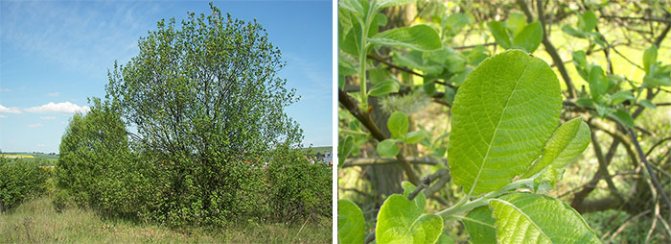

I. goat
The plant is widely used in medicine, agriculture, construction and crafts. At the same time, a number of decorative forms and varieties have been obtained, the main application of which is landscaping of various territories:
- "Kilmarnock" (Kilmanrok) - short shrub with long drooping branches, greenish oval leaves and yellow or gray inflorescences.
- "Weeping Sally" (Weeping Sally) - a variety similar to the previous one, but more compact in size.
- "Silberglanz" (Silver gloss) - elongated leaves with a silvery bloom on the surface.
- "Gold Leaf" - the leaves of this variety, on the contrary, have a golden hue.
Whole-leaved willow (lat. Salix integra) is an East Asian species most often found in Japan, China and Korea. Differs in modest (no more than 3 m in height) size and compact shape. Some botanists consider the plant a variety of purple willow. It stands out for its spreading. reddish or yellowish. branches and narrow leaves with practically absent petioles.
It is often found as an ornamental culture, the standard form is especially common. The most popular varieties are Hakuro-nishiki or Nishiki Flamingo, known for their compact size and beautiful variegated leaves in cream, pink and green hues. These varieties are often grafted onto the more frost-resistant goat willow and grown in the middle lane without shelter.
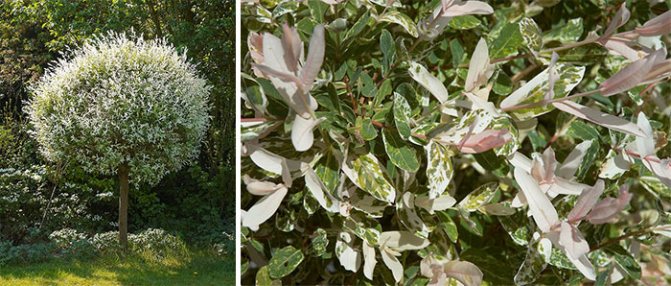

I. whole-leaved "Hakuro-nishiki"
The fragile willow (lat. Salix fragilis) is a species familiar to Russia, widespread in Europe and Western Asia. The plant was introduced to North America and Australia, where it turned into a weed, displacing native species.
It is a large (up to 20 m) deciduous tree with a long lifespan. The spreading crown consists of thin branches that break easily with a loud crack (hence the name of the species). Broken branches that have fallen into the water easily root, and when the current carries them further, they form new colonies. On the shoots are elongated bright green leaves.
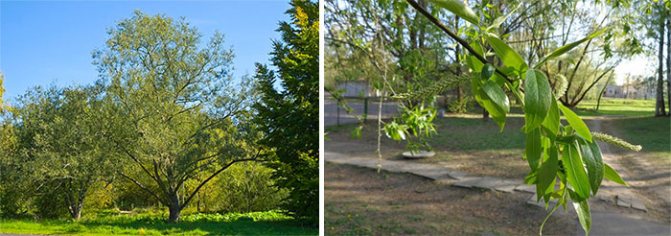

I. fragile
There are several varieties in culture:
- Bubble (var. Bullata) - a beautiful crown with soft rounded hills, a bit like a giant broccoli.
- Basfordiana (var. Basfordiana) is a hybrid with bright, yellow-orange branches.
- Russeliana (var.russelliana) is a tall, fast-growing variety.
- Reddish (var. Furcata) - dwarf willow with bright red inflorescences.
Decorative varieties:
- Rouge Ardennais - Spectacular reddish-orange branches.
- "Bouton Aigu" (Thin bud) - shoots from olive green to purple shades.
- Belgium Red - Burgundy shoots and emerald green leaves.
Rod-shaped willow (lat. Salix viminalis) is usually used for vines, but there are also decorative forms. This is a tall (up to 10 m) shrub or tree, distinguished by long flexible shoots, woody with age. Young branches are covered with short silvery hair that disappears over time. Very narrow alternate leaves appear in April, along with golden yellow inflorescences.
Norway willow (Latin Salix acutifolia), also called red willow, grows in most of Russia. This is a deciduous tree or shrub, the maximum height of which is 12 m. Most often, the plant is found along the banks of rivers and lakes, but it can also settle outside water bodies. Differs in thin long shoots of brown or reddish color and narrow two-colored leaves: bright green above, grayish-silver below. The plant is especially beautiful in early spring, when fluffy catkins bloom, and this happens even before the leaves appear. The most famous cultivar, Blue Streak, stands out for its graceful bluish-green leaves.
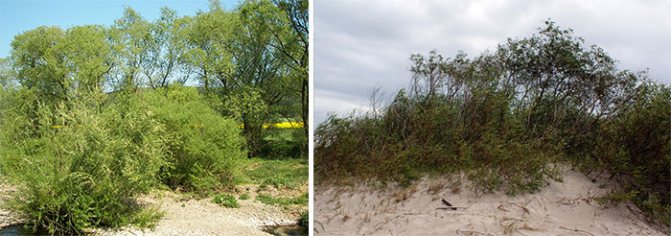

I. rod-shaped, I. holly
The creeping willow (lat. Salix repens) is a very graceful undersized (no more than 1 m) species common in France. In other regions, it is found very rarely and only as a cultivar. The main difference is a large number of branched stems, which are initially covered with a silvery down, and then bare. The oval-elliptical leaves have different surfaces: pubescent bluish bottom and glossy dark green above. Fluffy inflorescences bloom in April or May. The plant is protected in many areas of France.
The most popular variety is the silvery creeping willow (var.argentea) - a valuable highly decorative plant with densely pubescent grayish leaves and purple shoots.
Shaggy or woolly willow (Latin Salix lanata) is a subarctic species that grows in Iceland, Northern Scandinavia, and northwestern Russia. It is a spherical undersized (no more than 1 m) shrub with dense branched shoots. Young shoots are covered with a short gray down, over time, the stems become brown and smooth. Interesting leaves of the species - silvery, oval-ovoid. The texture of the sheet is velvet, felt. The view is great for landscaping areas in the northern regions.
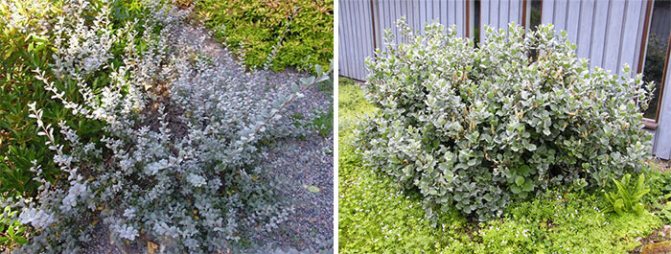

I. creeping, I. furry
Spear-shaped willow (lat. Salix hastata) is another undersized shrub species, the average height of which is 1.5 m, and the maximum size is no more than 4 m. It grows on the slopes and banks of Arctic rivers, in the Alps and tundra. Wild specimens are often found in North Europe and America, the Far East, Siberia, and Central Asia. The plant stands out for its branched shoots growing upward or spread over the ground, as well as oval leaves, smooth on top and slightly pubescent on the back.
Reticulated willow (lat. Salix reticulata) is a low-growing ornamental plant native to Eastern Siberia and the Far East. In nature, it serves as food for deer. It is a low branched (up to 0.7 m) shrub, decorated with branched creeping stems and unusual leaves. The leaves are oval in shape and dark green in color, have a textured silky surface. Due to its graceful appearance, the netted willow is often used in the design of parks, squares and household plots in the northern regions.
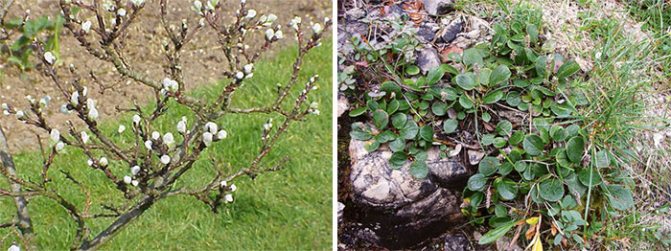

I. lance, I. mesh
Reproduction
The fragile willow, as mentioned above, propagates itself with whole branches.The wind helps her in this, which easily breaks off the shoots at the base that have reached 4 years of age. Falling on wet ground, they quickly put down roots and give life to new trees. In nature, where willows are left to themselves, you can often observe whole impassable thickets of these plants. The “brittle” willow got its name, because its branches break off easily. For gardeners, this is beneficial, since it is unusually easy to grow willow in garden plots. Propagating it by cuttings is not a hassle at all. They take a branch, place it in moist soil in the place where they want to see a willow, and after a couple of weeks it takes root. Brittle willow grows very quickly. By the age of three, its height reaches 3-4 meters, and the crown grows 2.5 meters in breadth. By the age of five, it stretches up to 10 meters. A brittle willow crown at this age without pruning can stretch in breadth up to 5-8 meters. In other ways, this species is not propagated, since there is no point.
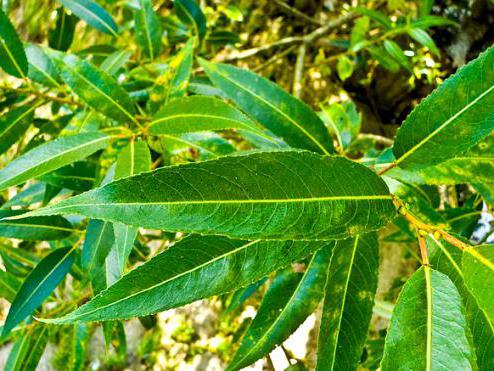

Rules for planting willow type spherical
In planting and leaving the tree is absolutely undemanding, like the rosemary willow, but you should follow the basic rules. The landing site must be open.
The tree can grow on literally all types of land, not counting overdried sandy soil. But more than others, clay soil with a high level of moisture is suitable for it. Planting is best done in spring, when the soil is still damp.
It is better to root young cuttings not in water, but in the ground itself. Regardless of the fact that in a container with water, the seedlings themselves are more likely to start their roots, but it is during planting in the soil that the plant is accepted much better and subsequently there are fewer difficulties. Often, the procedure for planting a cutting can lead to the death of a seedling.
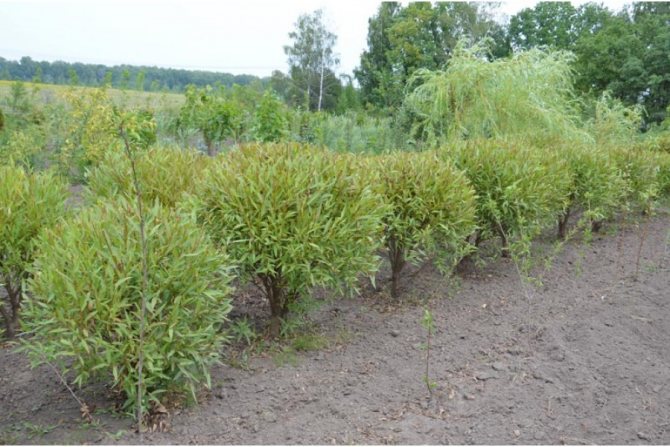

Choosing a landing site
So that the brittle willow grows well and does not hurt, it is advisable to plant it in places where a water source is located nearby. It also grows in swampy areas, and in spring it survives floods without problems. The willow loves light, so it is better to choose a planting place in the sun or in partial shade. Any soil is suitable for this tree. It can be sandstone, loam, fertile chernozem, rubble. Only when planting brittle willow on heavy clays, you need to lighten them a little with a layer of sand 30 cm thick. It is advisable to maintain the pH of the soil at least 5 and not higher than 7.5. When planting a willow, you can not worry if its root collar is buried in the ground. The main thing that needs to be provided for a young seedling is abundant watering. It should be noted that the older the willow, the worse it tolerates the transplant. It is better not to disturb trees older than three years of age by digging them out of the ground and transferring them to a new place.
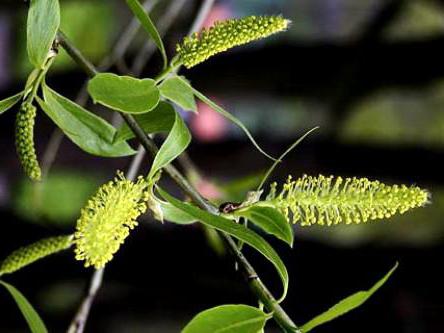

Growing and care
It is not difficult to grow a willow on your garden plot: the tree is very unpretentious and does not require complex maintenance. However, the diverse species of willows are often not alike and require different conditions: soil, amount of water and lighting. The method of propagation of plants may also differ. That is why the first task of the gardener is to determine the type of willow and, depending on this, act in the future.
Location, soil, fertilizing, watering
Almost all plant species are considered photophilous. They can easily withstand direct sunlight and prefer open spaces, however, a little shading will not harm the tree. Willow can be planted both in the open sun and in partial shade.
The humidity of the site depends on the selected species. The vast majority of willows in nature prefer to settle along the banks of water bodies, so they should be placed as close to the water as possible.
[!] With the help of powerful roots, an adult willow consumes a large amount of water every day. This property of wood is used to drain swampy soils and areas with near-surface groundwater.
Willow is not demanding for the composition of soils, although it prefers a loose (water and air permeable) and nutritious substrate containing a sufficient amount of sand with loam. The tree does not like peat soils, in which moisture stagnates, and only some willows (white and purple) are able to grow on peat bogs.
Only young immature specimens need feeding and watering. In the future, the tree itself obtains the necessary moisture through a powerful root system.
Pruning
The willow tolerates decorative pruning well, and with the help of this procedure, its crown becomes even thicker and more decorative.
Low and medium-sized willows with upward branches can be formed in the form of a ball or umbrella on a leg (trunk); in drooping varieties, you should simply slightly shorten the long shoots that reach the surface of the ground. It is not forbidden to regulate the height of the tree, restraining its growth.
It is better to remove excess branches in early spring, before the beginning of the growing season, or in late autumn. You can make slight adjustments to the tree throughout the summer. Are subject to pruning:
- powerful leading shoots (this will restrain the growth of the tree and will encourage the emergence of young side shoots),
- excess growth on the trunk (if the willow is formed on the trunk),
- branches growing inward and thickening the crown.
As for the standard willows, there are two main forms: a fountain and a ball. To get a fountain on a stem-stem, the shoots should be shortened quite a bit along the edges, so that the length allows them to hang freely, forming a green semblance of water jets. The spherical shape requires a more radical cut around the circle.
[!] When pruning, always leave the outermost bud upward on the branch. In the future, a young shoot on such a branch will also grow correctly - upwards.
If an old tall willow grows in your garden, which interferes with other crops and occupies a significant part of the site, do not get rid of it completely, but form a pretty green ball lying on the ground. Just cut the trunk close to the soil surface. Thus, the trunk will stop growing upward, and young shoots will soon appear from its lower part, which can be trimmed to the desired shape.
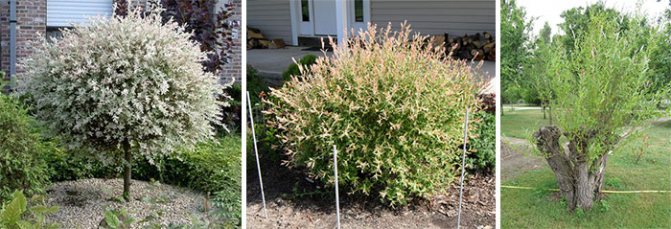

The trunks of young willows are often bent or bent to the ground. To fix this, it is necessary to tie the trunk to a support, for example, a metal pipe dug into the ground and leave it for 2-3 years. During this time, the trunk should straighten and acquire the desired shape.
Reproduction and planting of willow
In the wild, willows reproduce by seeds, cuttings, and some species even with stakes. In culture, the tree is best cut by cuttings, since the seeds quickly lose their germination in air and are well preserved only in water or silt.
Cuttings for planting should be cut from not too old and not too young branches. They should not be too thick or, on the contrary, thin - both are unlikely to give roots. The optimal length of a separate cutting is about 25 cm. Young root shoots, broken off with a "heel" (a piece of root), are also suitable.
You can plant cuttings for rooting at the end of October, before the onset of frost or in mid-spring. The leaves in the lower part are removed from the shoots and stuck into the soil at a slight angle, they can be soaked in the root for a day, although without this the percentage of rooting is quite high.
If several willows are planted at once, then the distance between them should be at least 70 cm for low-growing species, 1-3 m for medium-sized ones and 5-7 m for tall trees.
Care
A very easy-to-grow willow tree is fragile. Caring for her is no more difficult than reproduction. The main thing that this plant needs at any age is moisture, which is why they try to plant willows closer to the water. If it grows there, it cannot provide itself with moisture, it must be watered often and abundantly, and on very hot days, add a water shower for the crown. Mulching helps to retain moisture well.Willows are rarely fertilized, and only if there is no good growth of shoots. For a year, they should stretch about half a meter. If less, the tree can be fed with nitroammophos. Loosening of the soil near the trunk is also not performed. Only around young seedlings in the spring can you dig a little ground to a depth of about half a shovel. Spring pruning of dry, diseased and damaged shoots is also part of the process of caring for willow. To give the tree a beautiful look, you can regularly trim the crown. Willows tolerate this operation easily. It is advisable to tie young trees to a peg. This will give them stability in the wind. In severe winters, one-two-year-old willows are insulated by tying the trunk at the bottom with straw or rags.
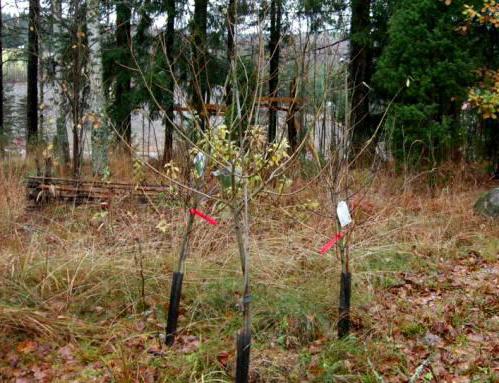

Growing features
As you know, willow grows best on moist soil near water bodies, but it is undemanding to the very composition of the soil. The annual growth of the tree is good, up to 1 m in height, but it decreases with a lack of moisture. For planting, it is better to take a well-lit place - the willow loves light.
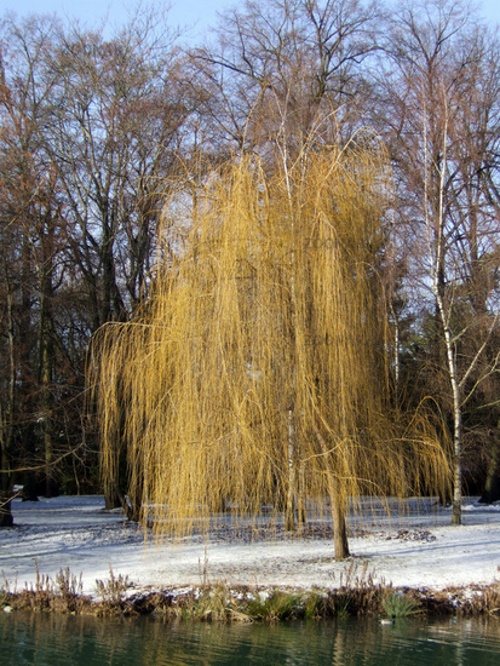

The tree is highly frost-resistant and does well without shelter.
Caring for a willow, planted at home, is minimal and consists in the following activities:
- Regular watering, especially of young seedlings and trees growing away from water bodies.
- Loosening and mulching of the trunk circle.
- With weak growth - feeding with nitroammophos.
Silvery willow lends itself well to shaping and by trimming its crown, you can give any decorative shape. The willow propagates mainly by cuttings, which take root quickly, but the seed method is also possible, but it has little root growth.
Diseases and pests
Perhaps the only problem that a brittle willow can present to gardeners is the abundance of insects feasting on its foliage. For many of them, this plant is fodder. On the willow, you can find up to two dozen pests, for example, poplar hawk moth, willow buckwheat, woodworms, a large army of Hymenoptera and Coleoptera. Get rid of them with insecticides.
In addition to pests that can be seen with the naked eye, willows suffer from microscopic living things - various fungi. Some of them affect the leaves, others bark, trunk, branches. The latter are the most dangerous, since they penetrate into the internal system of the tree and it is almost impossible to remove them from there. Such fungal diseases are manifested by necrosis of branches, bark. Sometimes tubercles with dark tops are formed on it, and sometimes in the spring you can see frozen droplets of yellow or red color on the branches. The cause of the disease can be mechanical damage to the bark. Prevention is autumn and spring treatment with antifungal drugs.
Fungal diseases of the leaves are white powdery mildew, rust, and various kinds of spotting. It is easier to deal with them, it is enough just to spray the tree with appropriate preparations. It should be said that fungal diseases can appear not only on willow, but also on any other tree.
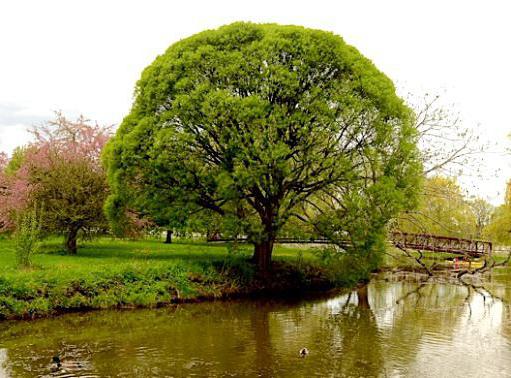

Willows for small areas
For many gardeners, willow is associated only with the type of Babylonian willow - a powerful tree up to 15 meters high with an elegant weeping crown. This is probably why willows in gardens, especially small ones, are still rare - although in their variety of shapes and sizes they can become an adornment of literally any corner!
For me personally, the garden is not at all extensive: its decorative part hardly occupies three hundred square meters. But even in such a limited space, there was a place for the willow of the Babylonian f. crisp, willow Matsudana f. twisted, Hakuro-Nishiki willows with variegated foliage, rosemary willow, goat willow - a weeping shape grafted onto a bole, and purple willow. All my willows from early to late spring delight the eye with fluffy earrings - "seals" - starting from huge, silvery-white, appearing in February on goat willow, and ending with graceful and modest yellow fluffs of Matsudan willow or twisting.In the Hakuro-Nishiki willow, these spring decorations are almost imperceptible, but it is grown for the motley, unusual pink-light green-white foliage of young shoots.
In general, the foliage of willows is as decorative and diverse as the earrings: gray-blue, long and narrow in the rosemary willow, glossy and wavy in the Matsudan willow, and completely unlike anything else - twisted like a corkscrew in the fast-growing beauty of willow Babylonian f. crisp.
And now, in order, about all the willows living in my garden, starting with the largest of its inhabitants.
Iva Matsudana, f. twisted (f. tortuosa)
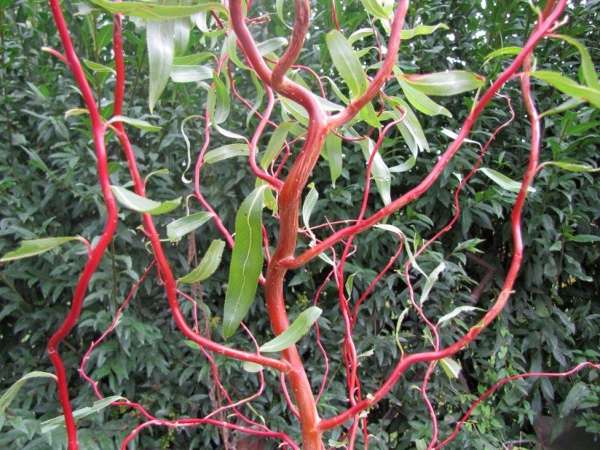

If you give the willow Matsudan freedom, then it will quickly reach a very impressive size: in my dacha in five years, this beauty has risen to a height of five meters. There is not much room in the current garden, so I hold back the tree with annual strong spring pruning.
On sale you can find Matsudan willow with green and yellow bark. The yellow-faced form is more elegant, especially in winter, when there are not many bright colors in the garden. The shoots and branches of this willow are serpentinely curved and create a whimsical, sophisticated silhouette. Light green, shiny leaves are also wavy, which gives the tree an additional decorative effect. Large branches left after pruning can be used for ikebana, dry bouquets. They look very impressive even without additional elements - both in vases and simply standing on thick branches-legs on the floor or any other surface.
If the Matsudan willow is regularly cut, its trunk thickens greatly and in 5-6 years it takes on the appearance and power of an old tree. This property can be used in those parts of the garden where you want to imitate the old days. Matsudana can grow in full sun as well as in partial shade, where the sun is only half a day. This willow is good in compositions with other trees and shrubs, and as a specimen tree, for example, at the gate or the entrance to the house.
Willow of Babylon, f. crisp
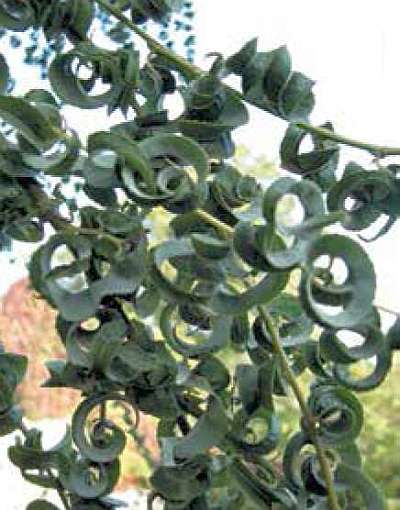

Like Matsudana, the Babylonian willow is a fast-growing tree with a powerful trunk reaching a height of 15 m. With good watering, this beauty at a young age can grow two or more meters per year! Crisp-shaped foliage looks “wrapped on curlers”, and the whole tree as a whole looks so unusual that no one can indifferently walk past this willow - even one who is not at all fond of plants! It is possible (and necessary) to restrain the growth of the Babylonian willow by strong spring pruning. If you regularly cut the current growth during the summer, then the crown becomes fluffy and compact. You can shape the Babylonian willow in the form of an original ball on a trunk.
Also, using the rapid growth of the Babylonian willow and the Matsudan willow, you can make an original living gazebo out of them. To do this, 5-6 young trees are planted in a circle, at equal distances. For a year or two, willows grow practically without pruning - only diseased and too low-growing branches are removed. Then, at the desired height, the trees are tied up above the center of the future gazebo, and their branches intertwine as they grow. Further care consists in cutting and shaping, as well as watering the "live gazebo" in dry weather.
Rosemary willow
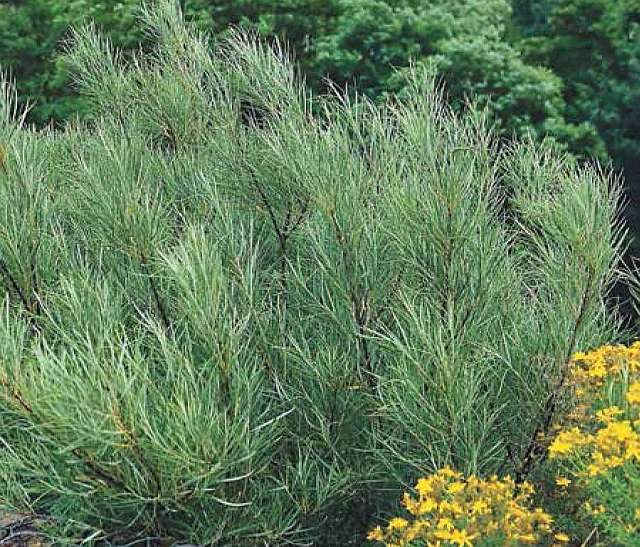

This beauty, which in some catalogs is called palm willow, is still not widely used in gardens. Meanwhile, its feathery, lush and airy foliage, especially spectacular in standard forms, is so noticeable and unusual that it can even argue with the beauty of flowering shrubs!
I believe that willows are just attractive because their foliage is decorative all season - so they can create the right accent where even ornamental shrubs, which look good only during the flowering period, cannot cope. Against the background of rosemary willow, conifers with golden foliage look advantageous, it goes well with variegated forms of trees, trees with large leaves, for example, catalpa.
Iwa Hakuro-Nishiki
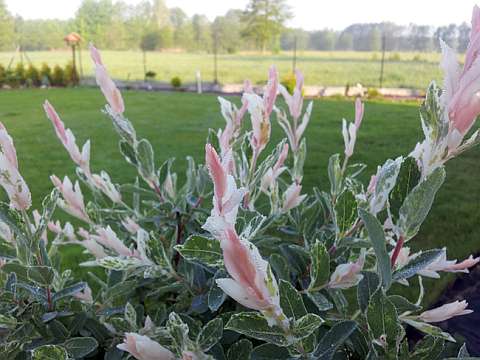

This small graceful willow is especially elegant after a haircut, when bright young foliage grows - pink-lime, completely mottled with white strokes. To keep the crown compact and bright, the Hakuro-Nishiki willow needs to be cut short 2-4 times a season. Usually, this willow is sold grafted on a stem - however, with patience, you can grow a stem plant from a cuttings. To do this, you need to tie the stalk to the support and remove all lateral branches to the place of the desired stem height. This usually takes two years. Then the shoot is cut, and a spherical crown is formed from the upper buds.
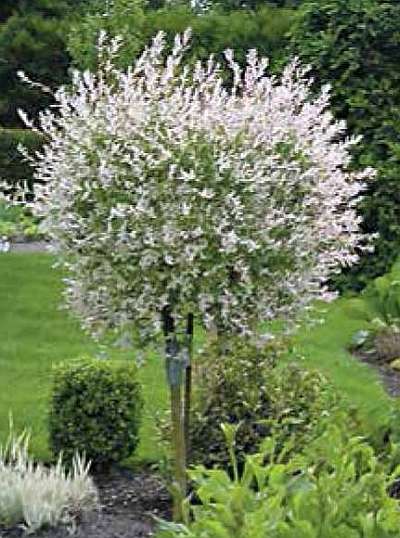

This willow looks good, formed in the form of a tree with several trunks, each of which is crowned with a cap of bright leaves. Like rosemary, Hakuro-Nishiki willow will perfectly fit into a mixborder, a composition of flowering or evergreen shrubs, conifers, and can also be used as a tapeworm.
Goat willow, f. weeping
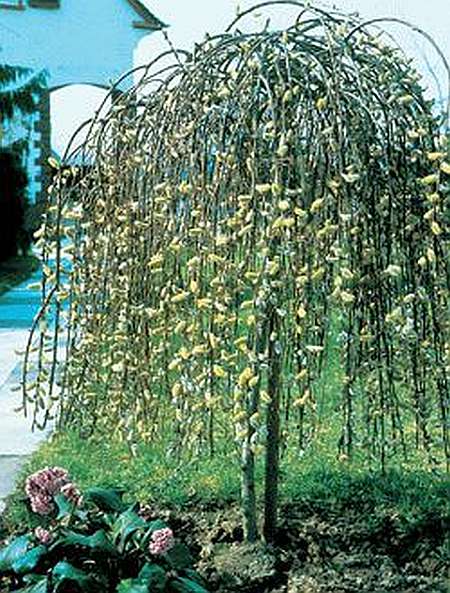

This willow has recently gained more and more popularity, thanks to the early blooming of very large elegant earrings and an unusual weeping crown. Unlike the previous species, this willow reproduces only by grafting - on the goat willow bole. Usually in early spring, two to four cuttings are grafted behind the bark or in the split, which quickly form a densely branched crown. Caring for weeping willow consists mainly of regular pruning: immediately after the earrings fall off, cut out all thin and weak branches, remove those growing in the opposite direction and gradually "raise" the crown, cutting out old branches from below and giving space to the upper shoots. Last year's growth is shortened, leaving two or three buds.
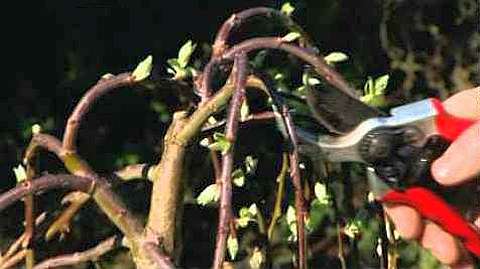

The photo clearly shows how much my willow is cut. After pruning, the crown recovers very quickly, new branches appear, the crown becomes lush and wider. For the winter, the cascade of branches falling to the ground is slightly shortened so that the shoots do not freeze into the ice crust and do not break out of the crown.
Purple willow
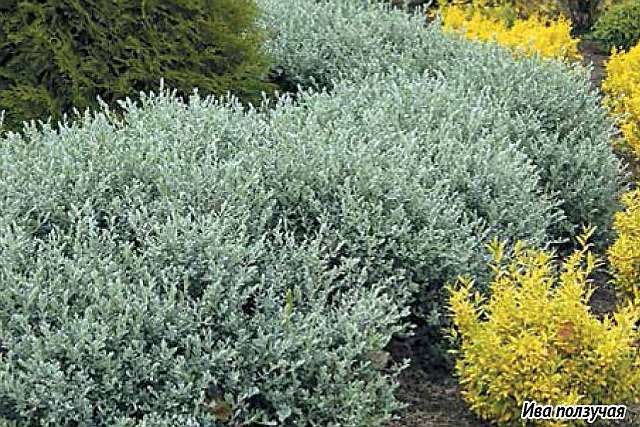

This willow is a small, graceful, multi-stemmed shrub that can reach 2 m in height and 1.5 m in diameter. However, it is better not to let the purple willow grow upward, as this will inevitably strip the bottom. Constant strong spring pruning, sometimes even "on the stump", helps to maintain shape. After pruning, the purple willow grows back very quickly and looks like a thick, almost perfect ball - which especially pleases lovers of topiary forms. Purple willow grows well both in the sun and in partial shade, looks great by a pond, stream or swamp.
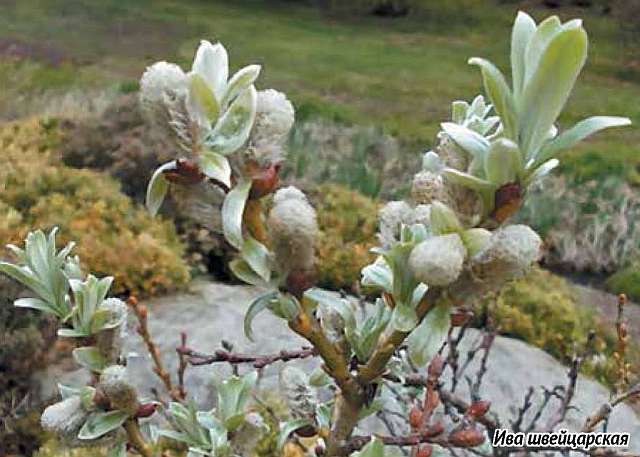

I have described only those species that I was able to find on sale and that fit perfectly into my garden. In addition, we can recommend for small gardens:
- creeping willow
- willow swiss
- and arctic willow - dwarf and ground cover species.
It is also worth mentioning that the arctic willow (polar) is the northernmost tree in the world.
The use of willow in landscape design
The brittle willow is not so often used by designers. The size of the tree, as well as its rapid growth, make it difficult to plant willow in group compositions. She is more suited to the role of a landmark on wide, well-lit lawns. It is also used to decorate natural and artificial reservoirs. They are happy to plant brittle willows where summer cafes are equipped. Under the canopy of the dense openwork crown of these trees, there will always be shade and coolness. For the same purpose, brittle willows are planted in parks to create shady alleys. Willow is considered an excellent honey plant. Thanks to this, it is successfully planted around apiaries to get early honey harvests.
Planting and replanting willow
And finally, a little about boarding and transferring. A willow with a closed root system easily takes root at any time - from April to October.When buying, make sure that the lump and roots are not overdried - the willow does not like this very much! Plants with open roots are best planted in early spring, before the leaves open, or in September, when the leaves begin to fall. When planting in autumn, the leaves of the seedling must be removed, and in large transplanted specimens, the crown must be shortened as much as possible. For planting shrub willows, a hole of 50x50 cm is enough, for tall trees -60x60 cm, the depth should be at least 40 cm.When planting and transplanting large-sized plants with a large lump of earth, the hole is prepared 40-50 cm wider, and the depth is laid at 30-40 see more coma. The planting pit is filled with a soil mixture consisting of soil, compost or rotted manure and peat 1: 1: 1 (from 1/3 to 1/2 of the pit volume). If your soil is heavy, sand should be added to the soil (up to 20%). You can also apply complex mineral fertilizers, for example, superphosphate or azofoska (150-200 g). After planting, the tree is certainly tied to a stake so that it is not turned out by the wind, and it is watered abundantly throughout the season.
Natalia Kassan
Other uses of willow
This beautiful tree is actively used in construction. The main criteria for this are solid wood and fast growth of wood pulp. Also, brittle willow is used for making crafts. But for the production of wicker products, it is not particularly suitable due to the fragility of its branches. The willow brittle is very much appreciated in folk medicine. From its bark and leaves, drugs are prepared for the treatment of rheumatism, osteochondrosis, whooping cough, fever, stomatitis, stomach and uterine bleeding, as an anthelmintic, diuretic, choleretic, antimalarial agent. All this is due to the content of tannins, flavonoids, salicin and other useful substances in the bark and leaves.
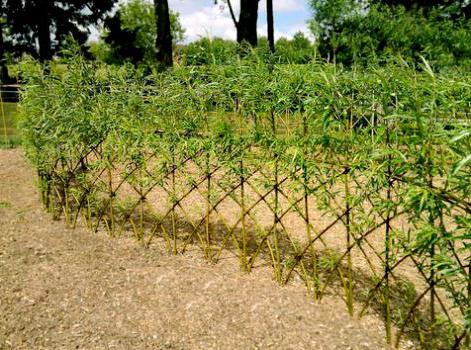

Willow description
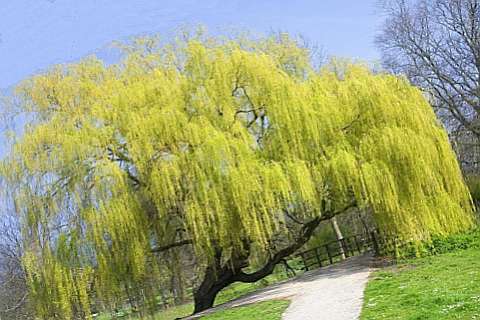

Willows are trees or shrubs, deciduous, rarely evergreen. The leaves, depending on the species, have a lanceolate, elliptical, almost round shape. Willows are dioecious plants: one tree has male flowers, the other has female flowers. Male inflorescences are decorative. Willows are valuable melliferous plants, especially early flowering species. All willows are photophilic. Due to the variety of species and different origins, they have different soil requirements, from dry sandy soils to fertile ones, but always require moist habitats.
Varietal variety
Breeders have long been interested in brittle willow. The varieties of this species are not very diverse, but there are many forms of it. Hybridization in vivo occurs if other species grow near the brittle willow, especially the white willow. Scientists are also engaged in hybrids. The works of Sverdlovsk breeders are especially famous. The varieties of willow brittle can be called the following:
-Salix fragilis f. Bullata (vesicular). It is a tree with dark foliage. With the formation of new shoots, swellings appear on the branches, similar to bubbles.
-Salix fragilis f. Decipiens. Trees with bark of branches are red-brown in color.
-Salix fragilis f. Roksensis. The bark of the branches is pale yellow.
-Salix fragilis f. Latifolia. This species has especially large leaves, up to 15 cm long and up to 2.5 cm wide.
Rakitas in landscape design
On large land plots, gardeners recommend planting large, powerful trees. Tall willows are ideal for landscaping city squares, parks, as well as along roads.
For willow varieties that prefer moist soil, places near the reservoir are perfect. Such rakitas will decorate the territory, as well as strengthen the banks and slopes.
Medium-sized plant species are planted on open land. They are the center of the plant composition, around which various, lower crops are planted.
Low-growing willow varieties are placed in small areas. With the help of such shrubs, you can decorate the miniature shores of backyard ponds in an original way.
Living willow weave
The rapid growth of brittle willow and ease of cultivation gave impetus to the development of an unusual art - the creation of various designs from living trees. These can be fences, tents, arches, gazebos, awnings, as your imagination tells you. They look unusually impressive. Do these constructions like this. At a certain distance from each other, willow twigs are planted and, as they grow, weave them or tie them with wire, braid into cells. Excess lateral shoots are removed, forcing the trunk to stretch in the desired direction.Over time, after the first cell, do the following. The result is quite beautiful living structures.
How to properly care for raquita
Caring for this unpretentious plant is akin to planting it, just as unpretentious and simple. The main condition that must be adhered to during care is the provision of moisture, that is, watering.
- If the tree was planted in a dry place, then it should be watered more often and indulge in “shower” procedures for the crown. You can use mulch to help retain moisture for the roots. Any material is used as mulch: fresh grass, straw, large sawdust, moss.
- It is not at all necessary to fertilize willow, it will already grow well, in one year it stretches by about 50 cm, but if the growth rates do not correspond to this growth, then add nitroammofosk to the root after loosening the soil or together with water.
- For young stock, an important point is loosening the soil around the stem. You should not be too zealous, it is enough to dig in the ground with a half-bayonet of a shovel.
- In the spring, you can carry out the necessary pruning for the formation. Dry, diseased and damaged shoots during the winter are removed, you can also trim the crown, the willow loves such care and begins to intensively grow new shoots.
- It is better to tie the young growth to the pegs, this will save them from the strong wind and will not break, and in the harsh winter time it is best to cover the trunks from below with straw or old rags.
Unpretentious care for willow is one of the favorable conditions for growing it on a personal plot. Usually summer residents plant these trees if the site borders on a river or other body of water. To strengthen the coastline, you cannot find a better helper, the brittle willow entangles the banks with its roots and does not allow them to collapse, but in this case it performs another function, hiding the site from strangers. If you shape the crown and control its growth, you can grow very cultured and beautiful hedges.
Three kinds of willow
Poplars can be considered the most primitive representative of the family. Although in some areas they are found almost at every turn. They are of great importance to humans. Due to their natural growth rate and unpretentious nature, they become an excellent source of wood.
Chozenia is represented by only one species. The tree is very fond of sunlight and grows on soil, which consists of a mixture of gravel and sand. Chozenia groves do not grow. As they age, they dry out and disintegrate, or are replaced by other species. It is difficult enough to reproduce, therefore they do not have a wide distribution.
Willow is a tree that is the most diverse genus of the family. You can meet him in any geographic location. It is divided into three subgenera: Salix, Vetrix and Chamaetia. Each of them has its own characteristics and many representatives. You can meet such trees in many places on our planet. Huge, strong and small decorative.
Views
In total, there are more than 350 plant varieties. The most common of them grow in the wild and are used as ornamental crops.


White
Other names: silvery willow, willow. The most unpretentious species, it grows in ravines, gullies, near rivers, ponds and swamps. Mature trees reach a height of 12–18 m. Shrub forms often develop from seeds.... The bark is dark olive, the crowns are openwork, the foliage is grayish-green, with a silvery sheen. The willows are frost-resistant, shade-tolerant, after damage and felling, they quickly recover by root shoots. Weeping willow is a white variety with dense drooping branches up to 3 m long.
Breaking
It is more often called wakita. Spreading multi-stemmed tree up to 7 m tall with a dense dome-shaped or spherical crown. Leaves are dark green, elongated, 5–8 cm long. Decorative, moisture-loving and light-loving look.In severe frosts, young shoots easily freeze over, but damaged trunks quickly overgrow over the summer. Used as hedges.
Goat
A low ornamental tree with a weeping crown. The branches fall down in the form of vertical cascades, the lower ones touch the ground, almost completely hiding the trunk. The species is used for planting on the banks of home ponds or creating garden compositions.


Sinuous
It attracts the eye with long brownish-red shoots, twisted in a spiral. The foliage is bright green, curly curved. Trees grow up to 3-4 m. The frost resistance of the species is average; in severe winters, the shoots freeze over. In the middle lane, seedlings require shelter until spring.
Purple
Medium tall shrub with a wide globular crown. Shoots are brown-red, bluish-green leaves, pointed. Shade-tolerant decorative type, planted in gardens or as hedges. Frost resistant.
Caspian
Densely branched shrub about 2–3 m high with yellow shoots and light olive narrow tough foliage. The crowns are spherical, openwork. The frost resistance of the species is average.
Whole-leaved
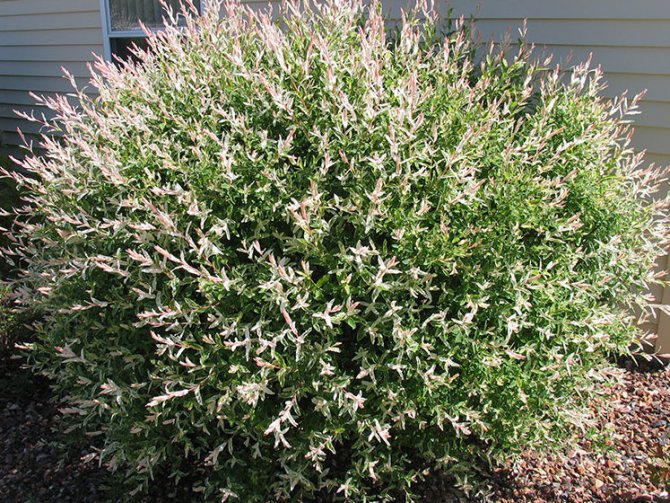

Sprawling shrub or small tree with unusual hanging branches. The plant is not frost-resistant, which is why it is grown mainly in the southern regions, in Asian countries.
The crown of the Hakuro Nishiki variety of whole-leaved willow is round, the leaves are white-pink-green. A distinctive feature is that they turn pink in autumn. Plant height and crown diameter do not exceed two meters.
The main pests of willows and control measures
In the general system of measures to increase the productivity of willows on plantations, special attention must be paid to measures to combat diseases and pests. Most often, willows are harmed by caterpillars of various butterflies, leaf beetles and elephants, aphids, flies, as well as a parasitic dodder plant. Most of all suffer from insects Russian, rod-shaped and purple willows.
- Poplar leaf beetle. The beetle is 10 to 12 mm long, with reddish elytra and bluish green pronotum and undersides. One black speck at the apex of the elytra.
- Aspen leaf beetle. The appearance and biology of the aspen leaf beetle are similar to those of the poplar. The beetle is slightly smaller in size than the poplar beetle (length from 7 to 10 mm) and does not have black spots on the elytra.
- Willow leafworm. Most often it affects the rod-shaped willow. The caterpillars of the leafworm roll the tops of the leaves into a dense cocoon and gnaw at the top of the shoot. The shoot is bushy, which is why it loses its technical qualities.
- Common willow aphid. It sucks out juice from leaves, buds, young shoots. Gives 10 generations a year.
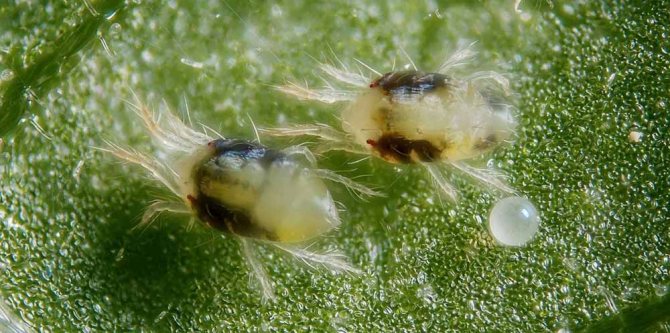

Spider mite
Spider mite. Appears on the underside of the leaf and sucks out the juice. With severe damage, the leaves turn brown and fall off. In summer, the mite is greenish-yellow in color, by autumn it acquires a reddish-orange color. It hibernates under bark, fallen leaves and in soil (at the stage of an adult female).
Bindweed. A weed that harms willow plantations, especially in the first year of life. The bindweed twines around the twig, leaving traces of spirals on the bark and even on the wood, causing the twigs to break during operation. Shoot growth stops.
European dodder. The plant is a parasite. Dodder launches adventitious roots into the wood of the twig, sucking out nutrients. Often the whole bush dies from the dodder.
Willow Wave. The butterfly is 20 to 25 mm long with white wings. Caterpillars are shaggy, yellow-blue with red dots.
Mouse rodents - harm the roots and gnaw planted cuttings.
Breeding
People who are engaged in weaving from vines have some difficulty in finding materials. Therefore, many are thinking about breeding their own small plantation.
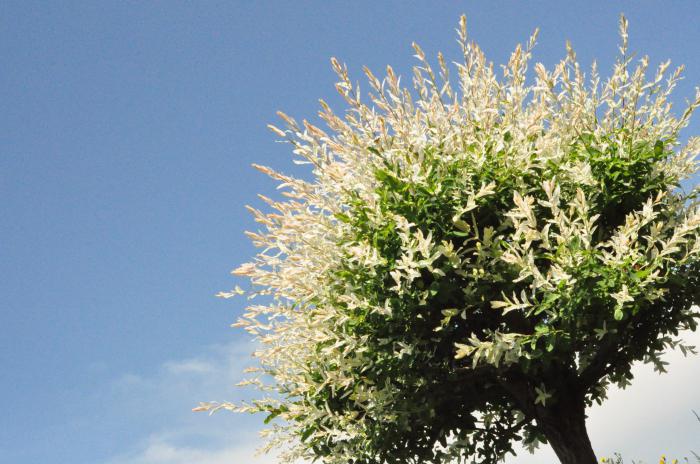

For good growth, choose a lighted and sufficiently humid place. It is best if the soil chemistry is acidic.
You can grow a new tree using seeds or cuttings. In order for them to take root and give good shoots, you should carefully consider the choice of the part for germination. It is best to use a cutting that is located at the very bottom of the trunk. This part is called the butt.
Willow is a tree that is planted in the spring or fall. The thickness and height depend on the frequency of the location. The closer the trees are, the thinner the trunk will be.
willow names
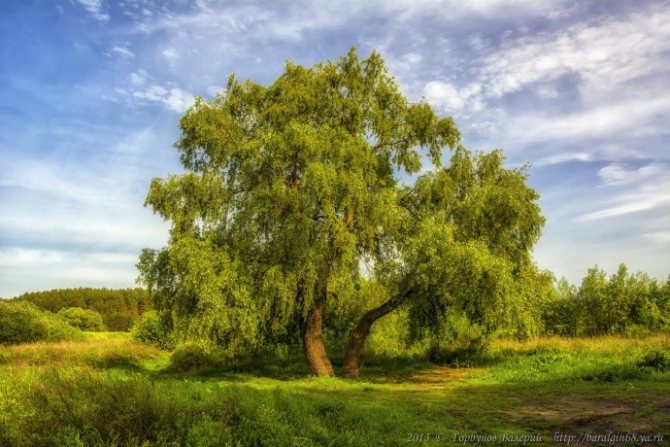

The Latin name for Willow is Salix. From the Latin words sal - water, lix - close.
In Russia, Iva is known under the names Verba, Loza, Vetla.
The same root words for Willow are found in many languages. The word is quite ancient, so there are several theories about its origin.
One of the versions of the origin is that the word comes from the verb vit. After all, in the old daysfrom willow villi peasants a huge amount of valuable things. And nowadays, willow is an excellent raw material for wicker furniture.
According to another version, the word came from ancient languages and meant "reddish wood".
Vetrix and Hamitea
Together, these two subspecies number more than three hundred representatives. The willow tree, the description of which is given below, is found in forest zones with moderate climatic conditions and belongs to the subspecies Vetrix (goat willow or delirium). It has large, spreading branches and a smooth trunk. It perfectly tolerates transplanting in various conditions, therefore it is quite popular with gardeners. Vetrix subspecies is a willow, tree or shrub of sufficiently large growth. In addition, the representatives differ in the structure of the buds, early flowering and shoots with absent or underdeveloped foliage.
The hametei group includes mostly low-growing shrubs, some of which are creeping. Earrings are located at the very end of the deciduous shoot. Seeds ripen late enough. In the forest-tundra, you can most often see the gray-blue willow. Polar and grass grows interestingly. Their trunk is deeply immersed in soil or moss, and only thin twigs with foliage come out.
Willow family
Three trees: poplar, willow and chozenia. What unites them? All of them belong to the Willow family and together have more than four hundred species. The main part grows in regions with a temperate climate, but there are plants that have reached the tropics, which indicates a variety of possible cultivation options. There are trees from the family growing in Africa.
These trees love light and moisture, but to varying degrees. Many are able to endure life in conditions with a lack of water. If we talk about poplars, then they are represented only by trees. Tall and strong trunks with lush crowns.
Is willow a tree or a bush? It can be a tree with a huge tall trunk or a lush shrub, a small, spreading plant. But the smallest species (from the Arctic and the Alps) still did not become herbs.
Willow can be found on the banks of the river. This is one of the best places for a tree - a lot of moisture and sun. In this case, individual specimens can be found on slopes, sands, swamps and in the forest (as an admixture to other trees).
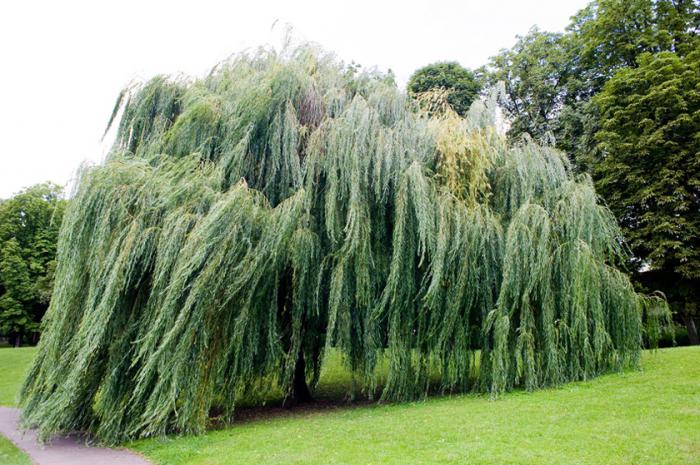

The most common representatives
In Europe, Russia, Central Asia, on the slopes, forest edges and forests, you can meet goat willow.
This plant is ten meters high and has a round and dense crown. Sometimes it can be a bush.
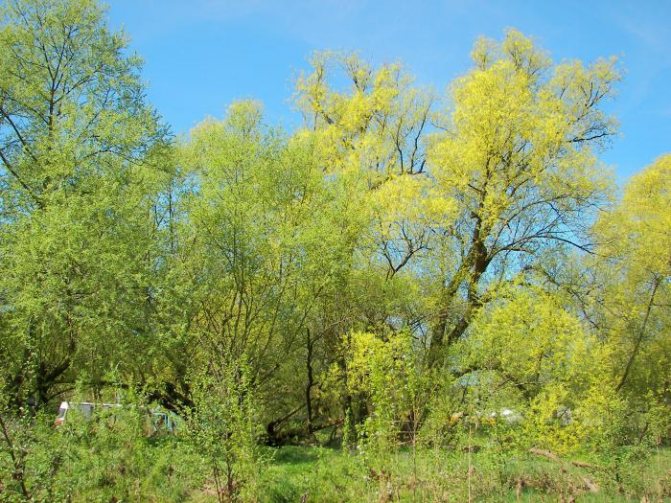

Another tree of the goat willow genus is the Mas willow, characterized by spreading foliage, greenish bark and dark red shoots. The plant is unpretentious to the soil, grows quickly enough, and the average life expectancy is thirty years.
A rather well-known tree in our area is willow. The description of the appearance of a weeping beauty has a fabulous and romantic story - about a girl who lost her lover and turned into an elegant tree. Standing on the shore, she sheds tears to this day, remembering the loss.
Tree spread
Today many people know what a willow tree looks like.It is quite easy to find a photo of a tree. And these plants appeared many years ago. Archaeologists have discovered prints of willow leaves in sediments that date back to the Cretaceous.
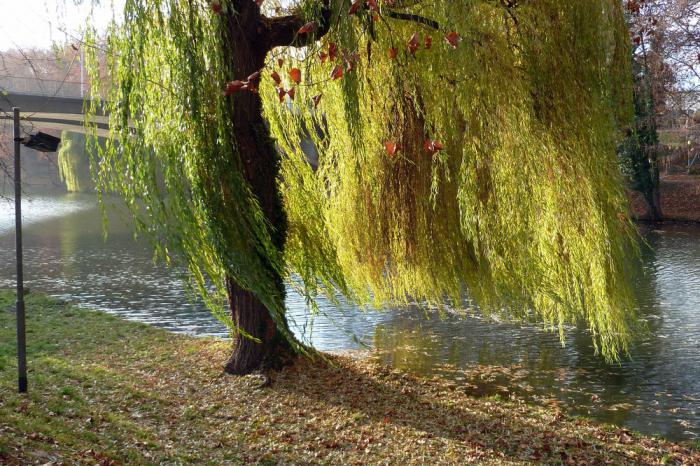

Some members of the family are found even in the Arctic Circle. Sizes range from trees with a trunk of fifteen meters to small shrubs. There is a huge number of willows in nature, some are more common, while others are not so well known.
Shelyuga, willow, willow, willow, vine, tal - all these are trees and shrubs that belong to the same family - Willow.
How to decorate a willow garden?
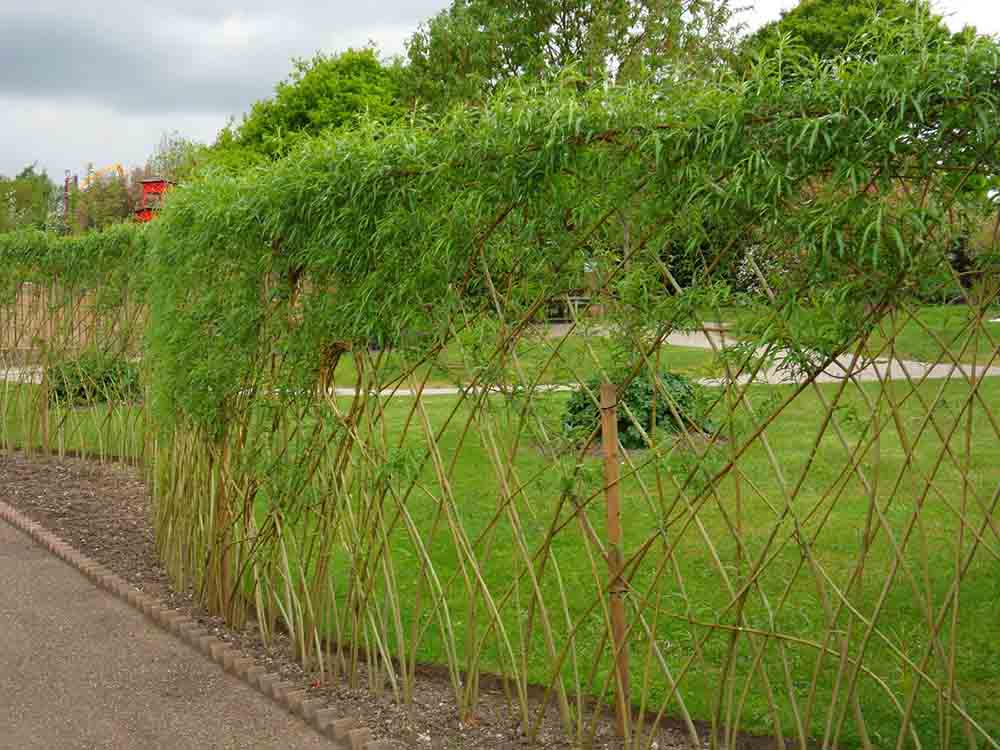

In gardens and parks, willows are traditionally planted on the shore of a reservoir. And this is quite understandable - a natural landscape, a familiar image. But, of course, such a plastic and unusually spectacular tree will decorate any corner of the garden, and its crown will protect you from the scorching sun.
Willows, planted at intervals of 1.5-2 meters, form a high hedge, and in two rows - a shady alley. A particularly beautiful alley is obtained from a white weeping willow when the trees close their crowns. To do this, already in the second or third year after planting, branches directed towards each other are intertwined at a height of 2.5 to 3 meters or connected by ablactation. Ablactation is a grafting method used to connect the shoots of one or different plants without cutting them off.
True, this method requires special skills, so it is easiest to braid the branches by fixing both tops with a thin plastic tape. After closing the willow branches, a green openwork tunnel is obtained. And if there is no place for an alley in the garden, then you can limit yourself to a green arch at the entrance - just two trees.
Shrub willows (purple, twisted, Caspian) are a delightful material for hedges. They will both shade and at the same time decorate the playground or playground. But no less picturesque are the bushes, simply planted in a row or in several clumps along the garden path. And how interesting dwarf or weeping willows look in rockeries, especially if a stream is flowing nearby or a small fountain beats.
However, a lone willow tree on a wide lawn, surrounded by flowering ornamental shrubs or in the company of conifers, whose prickly beauty only benefits from such a contrast, is also impressive.
Detailed study of willow
People are constantly studying nature. Natural knowledge helps to survive. When collecting plants for food, one should understand what is dangerous, and where useful elements are hidden.
The first descriptions of willow are found in the first century. Pliny the Elder described more than five species in his books. With the development of science, people learn more and more about living nature and try to classify everything. Willow has always been of interest to scientists. The tree, whose species were not so numerous many years ago (more than two dozen), created a number of disputes between Linnaeus and Skopoli.
The family was also studied in Russia. It was the Soviet scientist Skvortsov who collected and ordered all the available data on trees, typified and selected the appropriate names, and identified subspecies.
However, their huge variety to this day causes controversy and different opinions in scientific circles. Some countries even have their own schools for the study of these trees. Willow represents a huge variety of shapes and colors. Photo of a tree is most often weeping types located on the banks of rivers or lakes. Probably because these plants look especially bright and inspirational.
Representatives of these plants can be observed in the botanical gardens of England and Paris.


Willow care
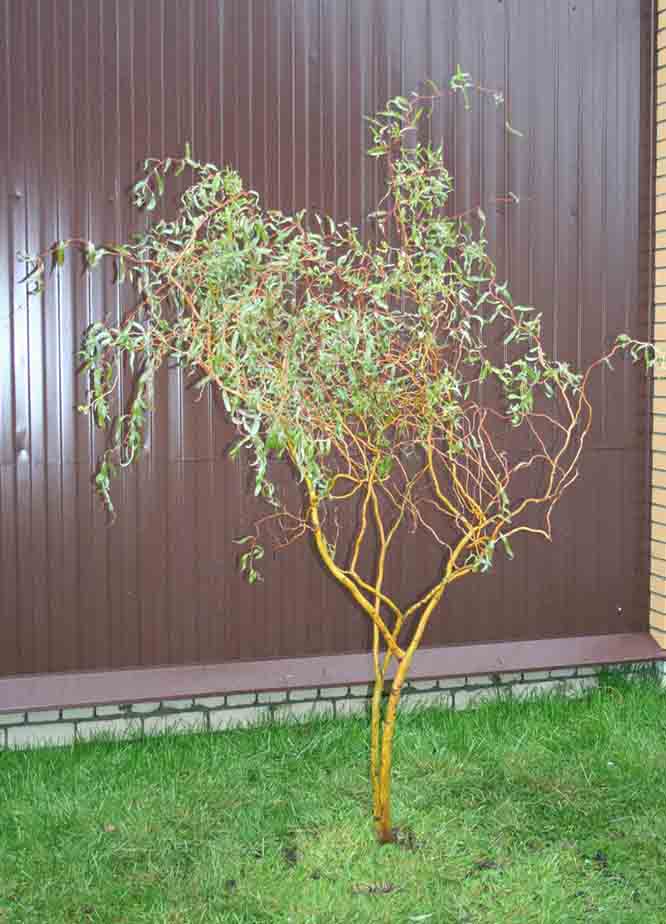

In the first season after planting, willow needs abundant watering: from 20 to 50 liters of water (depending on the size of the plant) every two weeks and every week - during the dry season. Then moderate irrigation will be enough for her. Shrub species forming hedges need to be mowed once or twice a season (spring and mid-summer).
As for feeding, during the spring and summer, complex fertilizers are applied two or three times, and at the end of August - superphosphate and potassium sulfate. In rainy years, gray and black spots often appear on the willow leaves, similar to a dirty coating. In order to return the tree to its original beauty, you need to spray it with copper oxychloride (HOM) or oxychom.
In the fall, it would be good to remove fallen leaves from the site. Grafted trees in summer or autumn must be freed from wild growth. We must not forget about the shelter of non-resistant varieties. This is done in October - early November.
Subgenus Salix
Most of the representatives are trees. The list includes approximately thirty species. Such a willow is a tree whose leaves are always sharp, flat. The veins are not depressed, and the edges are not twisted.
White willow is medium to large in size. Leaves are whitish with a silvery tint. Most often grows in river valleys. They are often bred, especially by residents of rural areas.
In addition, there are decorative representatives. Weeping willow is a tree that can be found in Asia Minor. It is from there that the representative who bears the name fragile comes from. A plucked branch of such a tree takes root well. Thanks to this, the species has spread far beyond its homeland - this tree can be found in many parts of Europe.
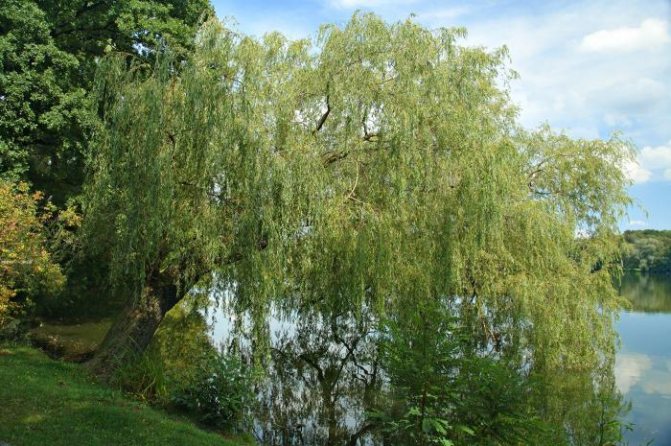

The five-headed willow is interesting for its external characteristics. It has beautiful foliage, as if covered with gloss. The very last of all representatives of its kind blooms, and only by the end of the warm pore its seeds ripen. Throughout autumn and winter, the tree is decorated with hanging dry earrings.
Application
A distinctive feature of the willow, which is actively used by all mankind, can be considered a well-developed root system. It usually covers a large area and has many branches. Thanks to this, it holds the soil perfectly. It is used for:
- strengthening of loose rocks;
- regulation of rivers in mountainous areas;
- strengthening the banks of canals and at dam sites;
- strengthening of sharp sloping slopes;
- preventing erosion in the steppes;
- retention of sands in places with high humidity.
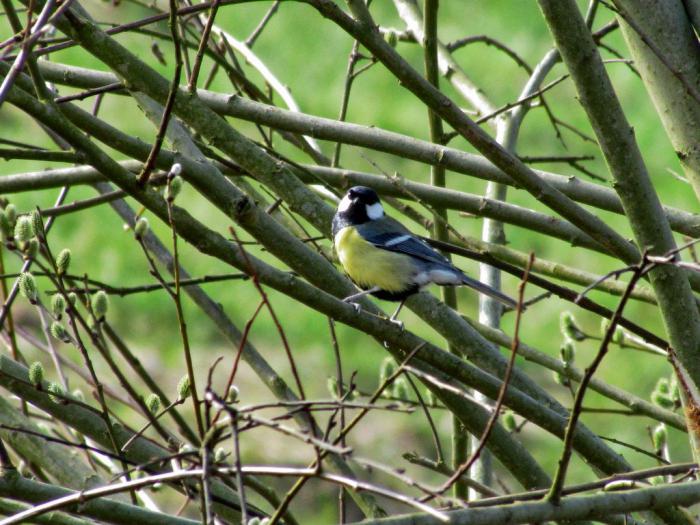

The wood is suitable as a material for crafts, it is quite soft and lightweight. In some areas, residential buildings are being erected from willow. Some animals love to feast on foliage. Willow is a tree that is considered an excellent honey plant; bees willingly visit it to collect nectar.
The bark is used in leather tanning. A variety of weaving is made from it, as well as from flexible and durable branches.
Low growing willows
The choice of undersized decorative willows is huge.
Shaggy willow (woolly) in the Moscow region it grows no higher than one meter. Earrings appear in the spring. The roundish grayish-green leaves have a white tomentose pubescence, so the entire bush appears blue and fluffy. This slow-growing willow is afraid of cold winds, waterlogging and prolonged drought. After the end of the sap flow, the frost-bitten ends of the branches are removed.
Drought tolerant rosemary willow up to 1 meter high it is better to plant on poor soil, it is possible among rockery stones. On nutritious soil, it fattens, which prevents the appearance of dense crown cushions. Most of the shortened trunk is hidden underground, and we see only numerous branches of the crown. Earrings appear before narrow dark green leaves, pubescent on the underside. Dense bushes are suitable for curbs. Peat is added to the planting pits.
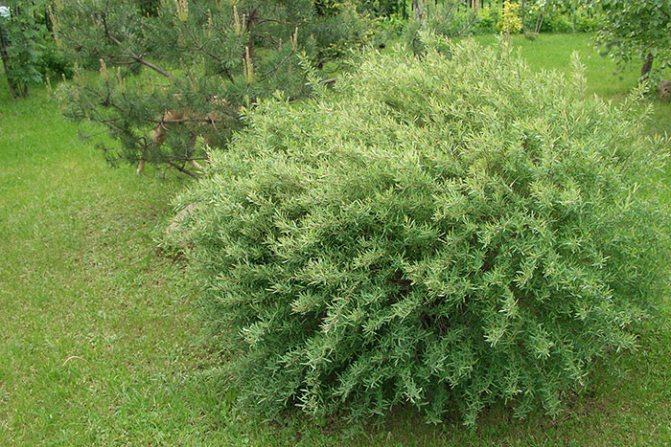

This undersized willow needs very little space.
Purple willow "Gracilis" (Nana) Is a ball up to 1.5 m high made of thin flexible branches of a purple hue. They move away from the shortened stem. Leaflets are narrow, lanceolate, silvery-bluish tint. catkins are bright, reddish in color. This willow is more elegant in a bright place. In the shade, the shoots stretch out, and the crown thins. The plant grows best on sandy soils with the addition of lime. Both humid and arid places are suitable for this culture. In severe winters, a beautiful bush may freeze slightly, but then it quickly recovers. Pruning is easy to carry and allows you to create a variety of garden shapes.
Willow herb (dwarf willow) up to 15 cm high (most often 6 - 7 cm) decorated with tiny earrings and small rounded leaves with a relief pattern of veins. It is a hardy species that is incredibly interesting. Willow herb is sometimes called the smallest tree in the world. Its homeland is considered not only the Arctic latitudes, but also the high-mountainous regions of the Alps and Pyrenees. There, this willow almost completely fits in a layer of moss, sheltering from strong winds. This type can be recommended to connoisseurs of bonsai.
The tundra species includes willow net - strongly branched low-growing frost-resistant shrub with branches 30 - 50 cm long, which spread along the ground. It grows slowly. Dark branches with small leathery leaves with a raised mesh pattern. Young leaves are pubescent. In spring, reddish catkins stick out vertically upwards. This look looks great among a scattering of stones, where low carpet cushions form over time. The net willow is ideal for a rock garden.
Who bends the willow branches?
The twisted trunk and branches of the matsudan willow are a distinctive feature of these trees or shrubs. The frost resistance of the species is satisfactory: in severe winters, freezing occurs above the level of snow cover. Some gardeners additionally insulate their plant for the winter. The popular decorative form "Tortuosa"- a tree or bush with a winding trunk and olive-gray branches. The leaves are also twisted in a spiral. The plant does not feel well in a windy place, especially with an icy northeast wind. Willow leaves are burnt during spring frosts. Without corrective pruning, the tree becomes thickened, which makes it difficult to admire the pattern of intertwined and twisted branches.
Willow twisting "Tortuosa"
The winding willow of the Ural selection with strongly curved branches of olive or reddish-brown color and twisted leaves is better tolerated by our climate. Tree height "Sverdlovsk winding 1" about 4 m. It has a weakly weeping shape. There are winter-hardy undersized forms with weeping and pyramidal shapes. They tolerate pruning very well. When propagating, it is better to root short cuttings.
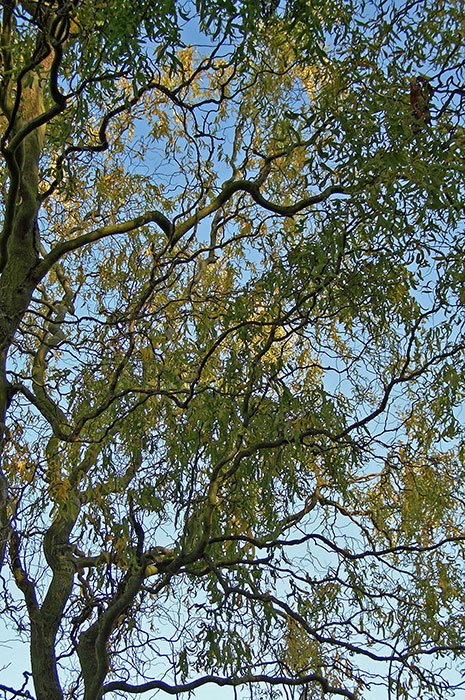

The sinuous willow always looks so unusual

